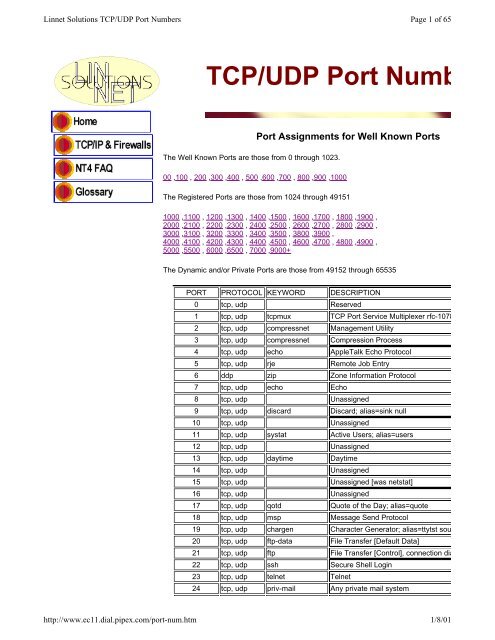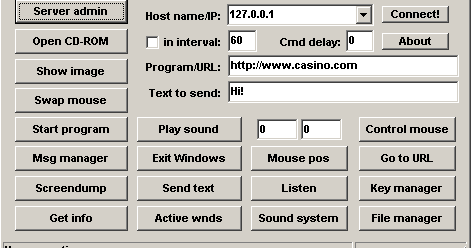

- #Netbus trojan horse port number install
- #Netbus trojan horse port number pro
- #Netbus trojan horse port number software
- #Netbus trojan horse port number windows
NetBus 2.0 Pro :- It was completely re-written and re-designed.

This utility also has the ability to scan "Class C" addresses by adding "+Number of ports" to the end of the target address.
#Netbus trojan horse port number windows
#Netbus trojan horse port number software
Application Exploits (Flaws in a web applications)Īntivirus software is designed to detect and delete Trojan horses ideally preventing them from ever being installed.Websites containing executable content (ActiveX control).Following are very common ways to become infected that most computer users perform on a very regular basis. Infection from Trojans is alarmingly simple. Most Trojans use an auto-starting method that allows them to restart and grant an attacker access to your machine even when you shut down your computer. ADSL users have static IPs, meaning that in this case, the infected IP is always known to the attacker this makes it considerably easier for an attacker to connect to your machine. This system is used when the victim has a dynamic IP, that is, every time he connects to the Internet, he is assigned a different IP (most dial-up users have this).

Many Trojans include the ability to mail the victim’s IP and/or message the attacker via ICQ or IRC. It is necessary for the attacker to know the victim’s IP address to connect to his/her machine. When a Trojan server runs on a victim’s computer, it (usually) tries to hide somewhere on the computer it then starts listening for incoming connections from the attacker on one or more ports, and attempts to modify the registry and/or use some other auto-starting method. The protocol usually used for communications is TCP, but some Trojans' functions use other protocols, such as UDP, as well. When a victim (unknowingly) runs a Trojan server on his machine, the attacker then uses the client part of that Trojan to connect to the server module and start using the Trojan. Trojans typically consist of two parts, a client part and a server part. In this case they are well known as "Zombies". This Trojan type is normally combined with another type of Trojan as a payload.ħ) DoS Attack Trojans :- These trojans are used by the attacker to launch a DoS/DDoS attack against some website or network or any individual.
#Netbus trojan horse port number install
Once installed, the attacker not only could download/upload files/programs to victim's computer but also install futher malware on your computer.Ħ) Security Software Disabler Trojan :- A type of Trojan horse designed stop or kill security programs such as an antivirus program or firewall without the user knowing. This gives the attacker the opportunity to conduct illegal activities, or even to use your system to launch malicious attacks against other networks.ĥ) FTP Trojans :- A type of Trojan horse designed to open port 21 (FTP) and acts like an FTP server. This can include files, folders, registry entries, and important system files, which likely to cause the failure of your operating system.Ĥ) Proxy Trojans :- A type of Trojan horse designed to use the victim's computer as a proxy server. They could install a keylogger and send all recorded keystrokes back to the attacker.ģ) Destructive Trojans :- Once this Trojan is installed on your computer, it will begin to systematically or completely randomly delete information from your computer. The different types of Trojan Horses are as follows-ġ) Remote Access Trojans :- Abbreviated as RATs, a Remote Access Trojans are potentially the most damaging, designed to provide the attacker with complete control of the victim's system.Ģ) Data Sending Trojans :- A type of a Trojan horse that is designed to provide the attacker with sensitive data such as passwords, credit card information, log files, e-mail address or IM contact lists. "A Trojan horse is an apparently useful program containing hidden functions that can exploit the privileges of the user, with a resulting security threat.". "A Trojan Horse, or Trojan, is a term used to describe malware that appears, to the user, to perform a desirable function but, in fact, facilitates unauthorized access to the user's computer system".


 0 kommentar(er)
0 kommentar(er)
